If you want to ride your site and apply landscape design aces, then evergreen thuza will suit you, like no other plant. This plant is most in demand for gardening parks and country sites.
This decorative tree has a chic crown, which can be given absolutely different and unusual forms. This will make your lawn with bright and interesting, your design and rich green colors of the Tui will please you even in winter.
Characteristics of the Tui family
North America and Canada can be considered the birthplace of evergreen. It is here, in the border states of Virginia, North and South Carolina and in Canadian territory, this amazing tree appeared. Translated from the Latin Thuya denotes a "vital tree". So it was called local aborigines, considering the American tree of life.
The visitors of foreigners struggled the beauty of this tree, an unsurpassed form of crowns and leaves, unpretentiousness to climate and care. Gradually, this plant moved to Europe and Russia, where it became one of the most common elements of landscape design. In Russia, it was used to use trees from the end of the eighteenth century on the Black Sea coast. More massively acquired by total steel after the 20th century revolutions.
Thuja refers to the family of cypress and is a one-bedroom decorative, coniferous plant, which can be viewed both wood and bush. These are evergreen plants that have a dense crown and a pleasant useful smell.
This decorative plant has 5 species: Western, Chinese, Korean, Japanese and folded. In nature, the Tui is found only in Asia and North America, the decorative representatives of the kind in parks and gardens grow around the rest of the world.
Description Tui West
Western Thuja is the most common view and most suitable for landscape design. Thanks to a set of decorated decorative varieties, it comes out on various lands, not whims for climate and care.
Description Tui Western:
- one-bedroom decorative tree, which can reach height up to 20 m;
- sometimes it can meet in the form of a shrub;
- refers to evergreen plants, so throughout the year will delight a thick crown;
- the color of the needle changes depending on the pore of the year (in the summer bright green, and in the winter it takes the brown shade);
- tui western crown is very compact, occurs with an egg-shaped or pyramidal form;
- the needles of the thuu differs from our pines, it is covered with small scales;
- small bumps appear in autumn;
- in young plants, the trunk is smooth with a red-brown tint, with age becomes grayish with longitudinal separation stripes;
- western Thuja is the most frost-resistant look, so it can be grown by almost throughout Russia;
- this decorative plant is unpretentious in caring and to the soil;
- it grows perfectly with contaminated air, it is great for landing in cities;
- has the ability to purify the air due to the release of phytoncides;
- thuja Western polymorphic view, so it is used to remove hybrid decorative varieties;
- it has more than 120 decorative species that differ in appearance, the color of the crown, height.
Main grades of Tui Western
Thanks to its polymorphism, Tuya Western has many varieties that will become an excellent decoration of any garden plot.
Tui Western varieties are decorative species that have different characteristics and appearance. Let's consider the features of major varieties.
Tuya West Smaragd.
- Sort Smragd is the most popular cultivated type of Tui.
- These decorative plants are widely used in modern landscape design. Such a spread of Tui Smaragd received due to their crown.
- Crown in these trees the correct cone-shaped form, which is achieved due to the dense location of the branches to each other.
- A rather large tree, which can reach a height of 4-6 meters, but in the width of the Thuya Smaragd grows only 1-1.5 meters. This makes such a decorative tree attractive for landscape designers.
- It has a bright green needle color, such a color is preserved even in winter, unlike other varieties.
- Grows slowly, for the year only 10-15 cm.
- Due to slow growth, pruning is rare.
- Winter-hardy grade Tui.
Variety Brabant
- Western Thuja Brabant is a fast-growing decorative tree, per year can grow by 30-40 cm, and in width - by 15 cm.
- In height can reach 15-21 m, but in our latitudes you can meet the Tui Brabant up to 4 meters high.
- Crown has a cone-shaped shape with very branched legs, which are very compact. Sometimes they can go to the ground.
- It has a bright green color that remains so even in winter.
- The trunk has a reddish-brown tint, sometimes peeling.
- Frost-resistant and unpretentious to the soil.
- It blooms in the spring in April or May, after flowering, brown and egg-shaped shutters appear.
- Perfect for living ingredients or single landings.
C0A Tui Western Danistan
- Refers to slowly growing varieties, is a dwarf plant.
- It reaches a height of only 60-80 cm, the crown width can be up to one meter.
- The variety was led in Denmark, hence the name.
- Crown has a spherical shape, color is saturated green shiny, in the winter acquires a browned hue.
- This grade is perfectly tolerated frost, is not demanding soil and climate.
- Does not require trimming, as it is a dwarf form.
- Perfect for small garden sites, for patio and alpine slides.
Variety Column
- This decorative tree has a crown of a column form, grows straight without branches.
- The height of the Western Tui Kolomna can reach 10 meters, in the width, differs in small sizes - a narrow crown, just 1.5 meters.
- The branches are very short, almost horizontally depart from the trunk. Arranged compact.
- Refers to fast-growing tours, per year can grow by 20 cm.
- The needles has a rich green color that practically does not change in winter.
- It can be used for landing on the alleys, for living hedges and for single landings.
Tuya Western Golden (Glob, Tuffett, Pearl)
- Very interesting and attractive Tui variety, which has a ball shape.
- This appearance refers to slowly growing, the average annual increase is only 10 cm.
- Is a dwarf form. The height reaches only 1 meter, in width - 1-1.5 m.
- Croon Tui Golden has a bright golden color, but only on the tips of the needles. Inside the color bright green.
- The whole crown has a not very dense structure, the branches are located at a short distance from each other. Density can be achieved by systematic trimming.
- In winter, the color is changing over the copper, in the spring again becomes golden.
- Great for small garden sites, to create an alpine slide.
Teddy grade
- The Western Thuja Teddy is a relatively new cultured variety of decorative Tui.
- It has a shape of the ball and the name to this species is associated with a bear.
- It refers to slowly growing dwarf species, it reaches just 30 cm in a height, it can grow to 40 cm in width.
- Young plants are very thin and covered with needles, with age, the needles disappear and the crown becomes dense.
- Crown has a bright green color, in the winter changes the color to the bronze.
- Great for small garden sites, to decorate tracks and alpine slides, can be grown in containers.
These are the most basic varieties of Tui Western. In addition to them, you can also note the grade of the Globa, Hollestrup, Sankirs, Ringold and others.
Photo of Tui Western
Vitely all the features of Tui Western varieties, as well as their use in landscape design can be seen on the photos represented.
For living hedges.
For decorating the site.
Preparation before landing
Planting the Western Tui requires careful preparation. After all, it directly depends on her courts and growth. The preparatory process can be attributed to the determination of the type of planting (with the help of seeds, seedlings or cuttings), landing sites and mandatory soil preparation.
Choosing a fit way
Western thuja multiply can in several ways: with the help of seeds, as well as vegetatively - seedlings and cuttings. From the method of reproduction depends on the choice of Tui landing.
- With the help of seeds, the western is bred very rarely. This method is suitable only for the type of tui, but not for varieties. Since all decorative properties will be lost and you will get a conventional Wild Tui tree. In addition, this is a very long and time-consuming process - you can grow a full seedling only in five years. Of the advantages of this method of landing, it can be noted that such a tree will be perfectly adapted to local conditions. Fresh-robbed Tui seeds need to leave under the winter under the snow - so they will germinate much faster. Then in the spring, put them in the nutrient ground. Sprouts usually germinate quickly, but long-term care needs for young shoots. And only for the fifth year they can be transplanted to a permanent place.
- Landing with cuttings is one of the most common ways. So faster leads to the results and you can get any varieties. For such a method of cultivation, two-year or three-year-old shoots are taken, they are soaked in mangartee and sit in the soil, after wintering the plant letters good roots and can be resettled to another place.
- Landing seedlings is the most expensive way, but also most reliable. You immediately get a ready-made seedling to land at the selected place. But here, too, the main thing is not to be mistaken. Saplings of Tui Western buy only in professional nurseries. So you will be sure that you bought the right variety. Choose only a high-quality seedling, check the roots so that they are not cut.
Choosing a place to land Tui Western
The choice of the right place to land will provide you with a beautiful and healthy decorative tree. It is believed that Western Thuja is not a whimsical tree, grows in any soils and does not require much effort when landing. But to get a perfectly acquired plant with a lush crown and normal color of the needles, it is necessary to carefully choose a landing space.
Tuya grows well and in the sun, and in a half. However, the sun can get burns that will damage the tree. Therefore, the perfect place for landing is a half-end, which is protected from strong winds.
For the growth of the Tui perfectly fits the turf soil with an admixture of leafy land, peat and sand. It can also grow on swampy lands, peat or clay.
How to put in order
To plant the Western Tui, you must first select a place and prepare seedlings.
The whole process of landing Tui Western is as follows:
- All Tui Western varieties can be grown both in the open ground and in containers (this concerns decorative dwarf varieties).
- When landing in the garden, it is necessary to take into account the distance between the thia, if you are going to perplex several seedlings. It should be from 1 to 2 meters.
- The best time for landing is spring. But some gardeners grow in other seasons, the main thing is to do it right.
- Sizes of the yam for seedlings depend on their root system. Approximately a pit must be about 1 meter in depth.
- Prepare a special mixture of different soils - turf, peat, leafy and sand. Add mineral fertilizer with a single plant 100 gr.
- If water is caressed on your site, it is necessary to place a layer of drainage from broken bricks on the bottom of the pit.
- When boarding a seedling, you follow the root cervix to be at the level of earth. It is impossible to raise it above or bury the earth, otherwise the plant may die.
CARE FOR TECH WESTERN
With constant care of the Western Tuya, you will get a beautiful and healthy decorative tree that will delight you all year round.
The care process is as follows:
- In the first month after landing, it is necessary to water it once a week.
- Be sure to spawn, during which we erase dust for the appearance of a more distinct flavor of the needles.
- After watering, spend a shallow soil explosion.
- Conducting mulching (slumbering of wood bark).
- In the spring period you need to protect the top (especially the young) from burns. To do this, use burlap.
- For the winter it is recommended to tie the thui ropes to the rope so that the snowfalls do not break them.
- Supplemental is considered to be a feeding of young shoots.
- In the spring it is desirable to trim dry shoots.
Rules Trimming and Forming Crown
To make the tree beautiful and well maintained, you need to do the following:
- You need to begin to trim in 2-3 years of life.
- For this process, it is necessary to use a very acute sektor, so that during the trimming there is no dents on the branch. It will contribute to a faster healing.
- Pruning is better spent in the summer, after the kidney and branches of the plant are formed.
- Action on adjustment can be carried out throughout the season, but only minor.
- You can form a crown after it reaches the desired growth.
- When forming, be sure to cut no more than 1/3 escape. It is necessary that the tree itself does not weaken.
Fighting pests
Another step in the departure of the Western Tuya is to identify pests and the fight against them:
- Like other plants, Thuja is subject to various diseases. The reasons for them are pathogens: Fusarium mushrooms, cytospore or thomas. Such mushrooms may be damaged krone, roots, young shoots. For treatment, a potatocide is used, which is starting to apply from spring and to the complete recovery of the tree.
- Another concern of gardeners are various pests that can harm Tue. The most dangerous: Toy Till and Turn Flapset. To combat them the following means are used: carboofos, Rogor, Decis.
Observing all the rules for landing and care for the Western Things, you will get a stunning tree that will be the central decoration of your site and will delight all year.

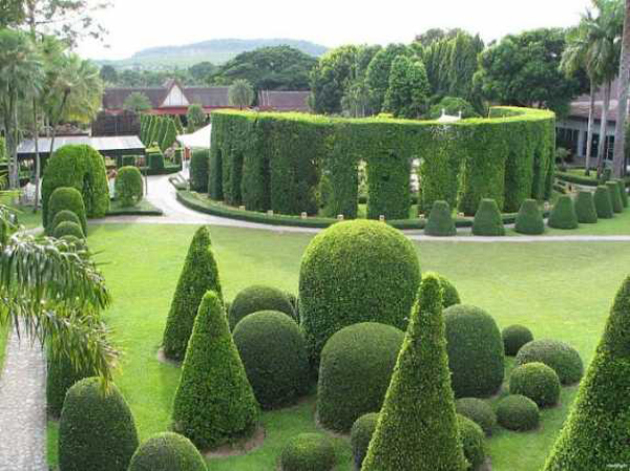
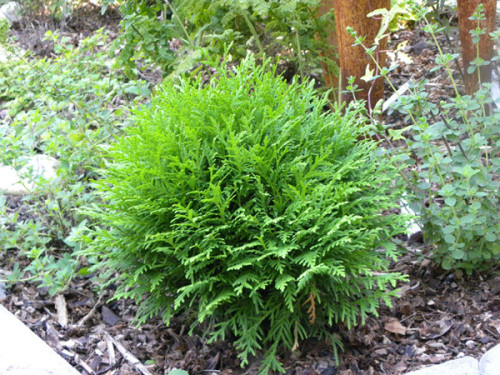
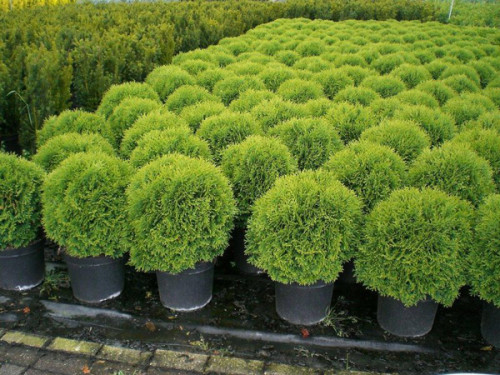
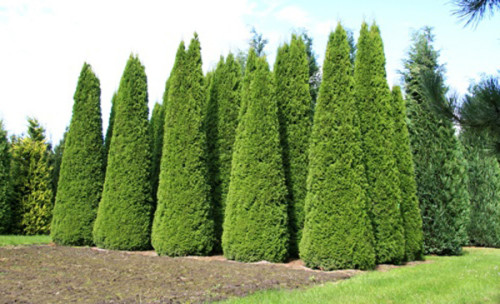
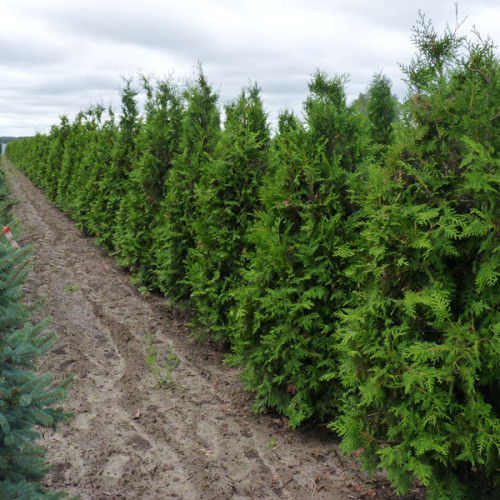
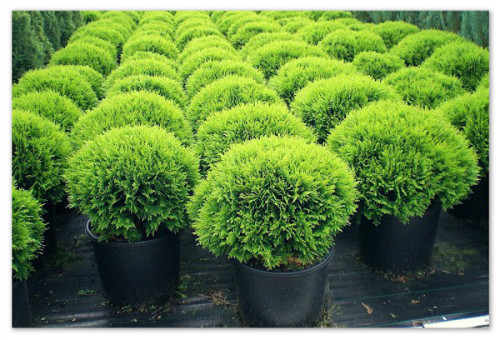

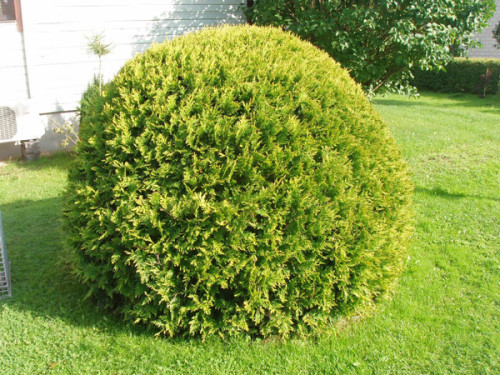

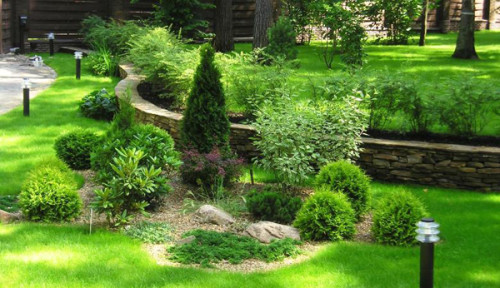
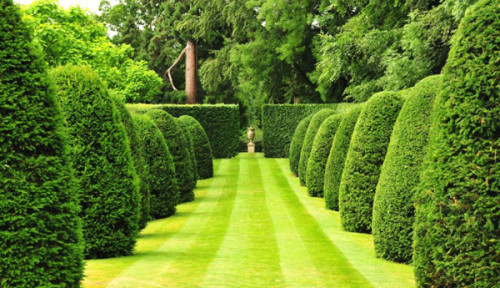
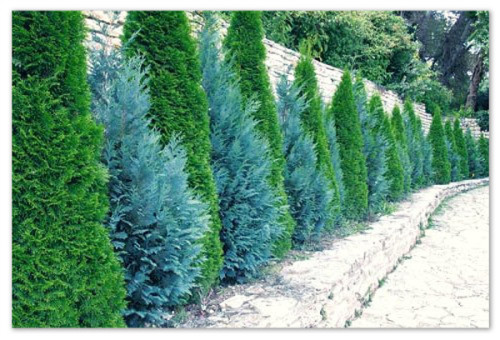
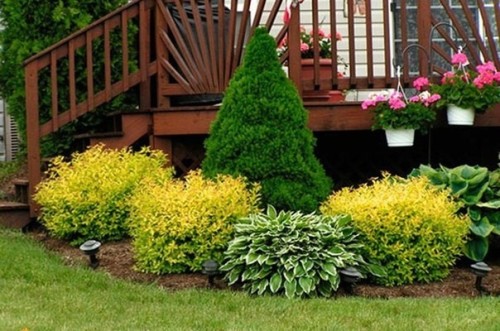
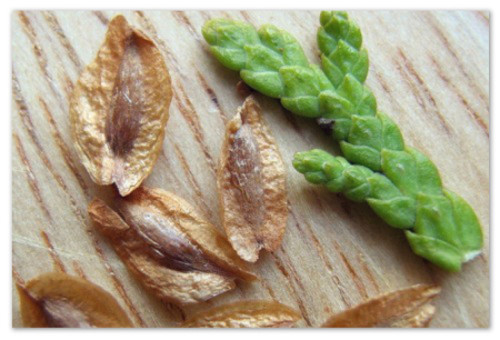
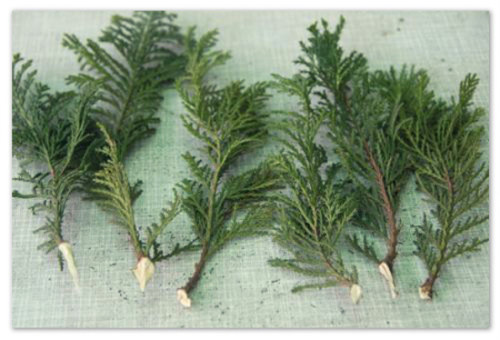
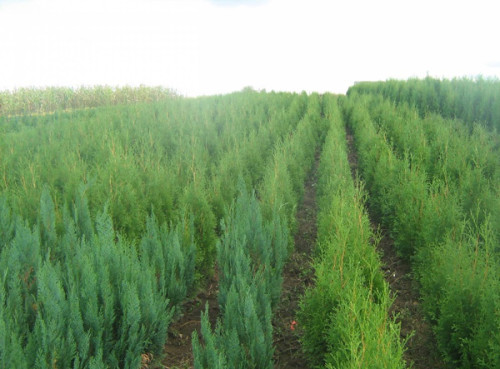
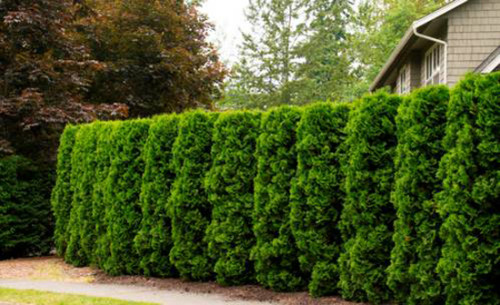
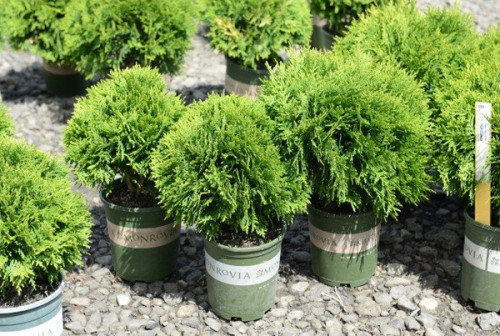
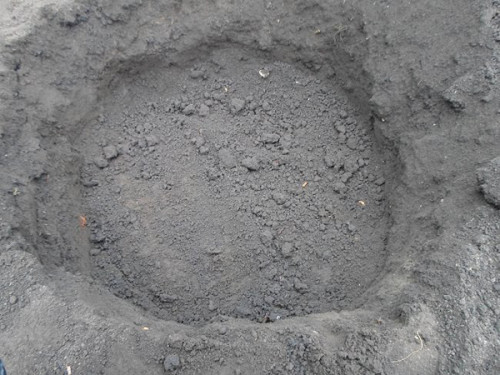
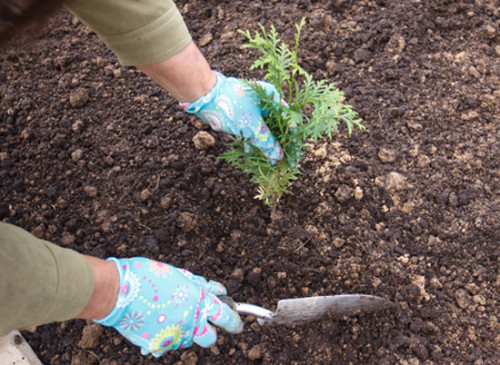
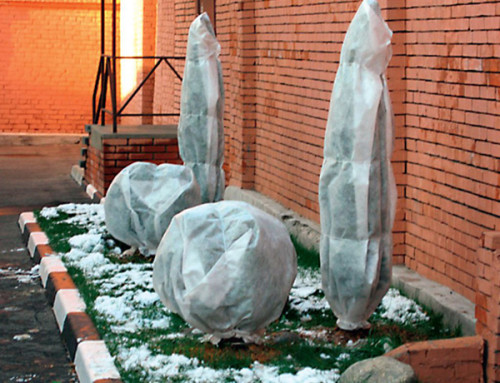
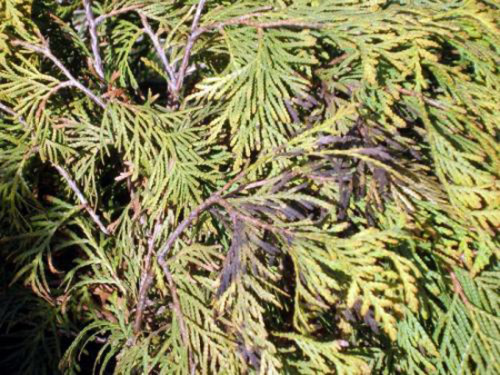












 Start a discussion ...
Start a discussion ...